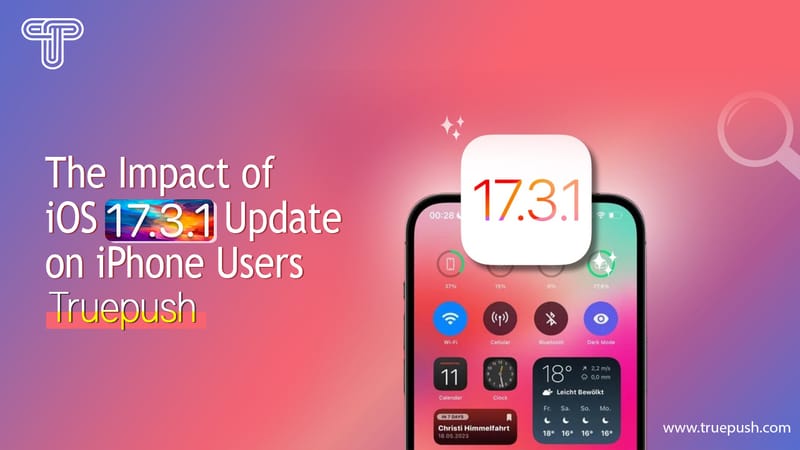Businesses may now engage with their consumers. And increase website traffic by using Push Notification Magic. In this article, we'll look at several examples of web push notification campaigns. That was successful, as well as some failures, and the lessons we can take from them.
I. Introduction
Web push notifications are notifications that users receive through their web browsers. Businesses may use these notifications to alert subscribers. To sales, remind them of appointments, and offer them customized information. Businesses may interact with their consumers in real time. Even when they aren't on their website thanks to web push notifications. Because of this, web push notifications are an effective technique. For increasing website traffic, consumer engagement, and sales.
II. Case Studies of Successful Web Push Notification Campaigns
Here are some examples of web push notification campaigns that were effective. And what you can learn from them:
Company 1:
To boost abandoned basket recovery rates. SmartrMail, a marketing automation tool for e-commerce enterprises, uses web push notifications. Revenue increased by 6.7% and click-through rates rose by 14% as a result of the campaign. The necessity of personalization in web push notifications. Was the main lesson learned from this campaign? The messages were more pertinent and useful. When the subscriber's name and the products they had left in their basket were included.
Company 2:
To advertise a new mobile app. Leanplum, a mobile engagement platform, uses web push notifications. The campaign led to a 19% rise in daily active users and a 33% increase in app open rates. How vital timing is for push notifications was the campaign's most significant lesson. Leanplum was able to boost engagement and encourage app uptake. By timing the delivery of messages.
Company 3:
SendPulse, a marketing platform, used push notifications to promote a new blog post. The campaign led to a 21% increase in time spent on the website and a 40% increase in click-through rates. The important lesson to be learned was the value of a crystal-clear call to action. SendPulse increased clicks and engagement by incorporating a direct and engaging call-to-action.
III. Lessons Learned from Failed Web Push Notification Campaigns
It's crucial to draw lessons from unsuccessful web push notification campaigns. Here are a few instances of businesses that didn't quite get it right:
Company 1:
To advertise a fresh blog post, Hootsuite used push notifications. Low engagement and a 50% opt-out rate were the outcomes of the campaign. This campaign taught us how important relevancy is in web push notifications. The alerts from Hootsuite were not tailored to the subscriber's interests. And we're much too general.
Company 2:
To advertise hotel deals, online travel operator Booking.com used web push notifications. 10% of people signed up for the campaign, and engagement was minimal. The significance of the opt-in procedure was the learning from this campaign. The opt-in procedure at Booking.com was difficult to understand, which led to a low opt-in rate.
Company 3:
To advertise a deal, the department store chain Macy's deployed online push notifications. Low engagement and high opt-out rates were the outcomes of the campaign. This campaign taught us how important frequency is for web push notifications. Macy's issued too many alerts, which led to opt-outs and subscriber weariness.
IV. Best Practices for Creating Effective Web Push Notifications
Here are some recommended practices for producing efficient web push notifications. Based on these case studies and the lessons learned:
- Personalization: Personalize online push alerts by using subscriber data. Such as the user's name or interest.
- Timing: To boost engagement, send web push notifications at the appropriate moment. Based on the subscriber's actions or time zone.
- Clear call-to-action: To increase clicks and conversions. Provide a clear and appealing call to action in your web push notifications.
- Opt-in procedure: To get subscribers to opt in. Make sure your opt-in procedure is simple to grasp. And offers something worthwhile to the subscriber.
- A/B testing: Examine many iterations of your web push notifications. To see which ones your audience responds to the best.
- Analytics and optimization: Track the effectiveness of your push notification campaigns using analytics. Then make improvements to them for improved outcomes.
V. Conclusion
Businesses may communicate with their consumers. And increase website traffic by using web push notifications. Businesses may develop successful web push notification campaigns that provide results. By adhering to these best practices and learning from successful and unsuccessful efforts.
In conclusion, the key elements of a successful web push notification campaign are. Personalization, timing, a clear call-to-action, opt-in procedure, A/B testing, analytics, and optimization. You can increase web push notification clicks, engagement, and income. By adopting these best practices into your campaigns.
Check out the following links if you want to learn more about web push notifications:
1.https://www.truepush.com/blog/art-of-web-push-notifications/
2. https://www.truepush.com/blog/web-push-notifications/
3. https://www.truepush.com/blog/283-percentage-increase-in-web-push-notifications/
You may develop successful web push notification campaigns. That provides results for your company. By adhering to the best practices suggested in this article. And drawing inspiration from these resources.




